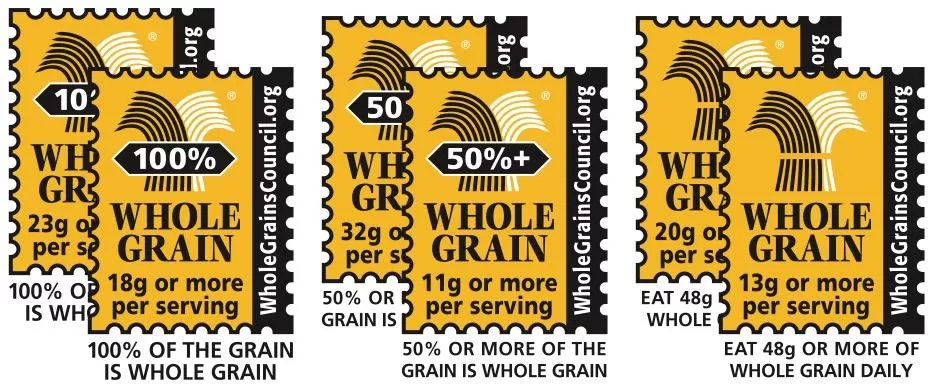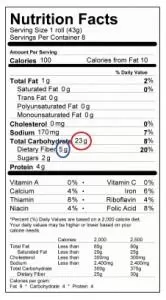
Whole Grain Stamp
The 1:10 Rule for Choosing Whole Grains

Current scientific evidence indicates that whole grains play an important role in lowering the risk of chronic diseases, such as coronary heart disease, diabetes, and cancer, and also contribute to body weight management and gastrointestinal health.
Determining whether a product you are considering purchasing is indeed whole grain can be confusing. One way is to use the whole grain stamp.
Another way to determine carbohydrate quality has been developed by a recent Harvard study which offers a simple way to increase the odds of choosing wisely. Look for less than a 10-to-1 ratio of total carbohydrates to fiber on the nutrition label of whole-grain products.
For every 10 grams of carbohydrate there should be at least one gram of fiber. Why 10:1? That's about the ratio of fiber to carbohydrate in a genuine whole grain unprocessed wheat.
Divide the grams of carbohydrates by 10. If the grams of fiber is at least as large as the answer, the food meets the 1:10 rule.
In the nutrition label shown here, for example, one serving of this whole-grain roll has 23 grams of carbohydrate. Divide that by 10 and you get 2.3. It also has 5 grams of dietary fiber, which is greater than 2.3. That signals a healthy whole-grain food.
Whole grain bread and cereals are great ways to eat whole grains.
Sources:
Mozaffarian, R., Lee, R., Kennedy, M., Ludwig, D., Mozaffarian, D., & Gortmaker, S. (2013). Identifying whole grain foods: A comparison of different approaches for selecting more healthful whole grain products. Public Health Nutrition, 16(12), 2255-2264. doi:10.1017/S1368980012005447
Sawicki CM, Jacques PF, Lichtenstein AH, Rogers GT, Ma J, Saltzman E, McKeown NM. Whole- and Refined-Grain Consumption and Longitudinal Changes in Cardiometabolic Risk Factors in the Framingham Offspring Cohort. J Nutr., Volume 151, Issue 9, September 2021, Pages 2790–2799, https://doi.org/10.1093/jn/nxab177.
Mozaffarian, D, Appel, LJ & Van Horn, L (2011) Components of a cardioprotective diet: new insights. Circulation 123, 2870–2891.
Ludwig, DDS (2002) The glycemic index – physiological mechanisms relating to obesity, diabetes, and cardiovascular disease. JAMA 287, 2414–2423.
Categories: Food
Active Nutrition is a participant in the Amazon Associates Program, an affiliate advertising program designed to provide a way for websites to earn advertising revenues by advertising and linking to Amazon. If you click on one of my recommended item links and then place an order through Amazon, I receive a small commission on that sale, at no extra expense to you of course. This is a way to support me and my work every time you shop at no cost to you.





